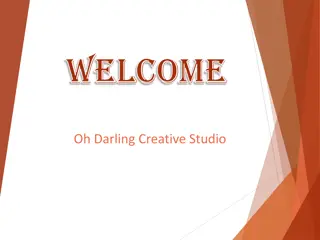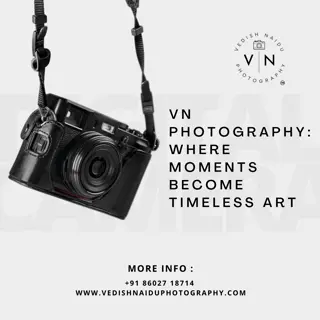Advancements in Ophthalmic External Photography
Ophthalmic external photography, particularly external ocular photography (EOP), plays a vital role in ophthalmology practice by capturing images of the eye, ocular adnexa, and facial structures. It aids in documenting lesions, nerve anomalies, surgical outcomes, and disease progression. Digital photography offers benefits like easy image storage and editing. Proper camera selection, room setup, and patient positioning are essential for standardized and high-quality photography in ophthalmology.
Download Presentation

Please find below an Image/Link to download the presentation.
The content on the website is provided AS IS for your information and personal use only. It may not be sold, licensed, or shared on other websites without obtaining consent from the author.If you encounter any issues during the download, it is possible that the publisher has removed the file from their server.
You are allowed to download the files provided on this website for personal or commercial use, subject to the condition that they are used lawfully. All files are the property of their respective owners.
The content on the website is provided AS IS for your information and personal use only. It may not be sold, licensed, or shared on other websites without obtaining consent from the author.
E N D
Presentation Transcript
2 Introduction
/ . External ocular photography (EOP) an essential tool in the day-to-day practice of ophthalmology as it entails the imaging of the external eye, ocular adnexa, face, and the anterior segment of the eye. External eye It is commonly used to document lesions of the eye or surrounding tissues, demonstrate facial nerve anomalies and photography record pre- and post-surgical alignment of the eyes or eyelids. 3
/ . Ophthalmic external photography is of paramount importance in: baseline disease documentation, patient counselling and education, Importance of external assessment of disease progression and treatment response, eye photography research and publication. Therefore, immaculate photography is essential and a perfect understanding of standardization of photography is mandatory for all ophthalmologists. 4
/ . Digital photography offers significant advantages over conventional photography. Storing and retrieving digital images is particularly convenient and allows for the deletion of unwanted images and recapturing them. also can be useful in providing care in tele-ophthalmology systems Type of camera with the ability to correct almost all aspects of an image and for publications, presentations, patient information and communication, and medicolegal documentation. 5
/ . Photography room Camera and Illumination Parameters for Position of patient Standardization Distance from patient Background 6
/ . Photography room : It is advisable for the ophthalmologists to have a dedicated room/area with appropriate dimensions and illumination for the purpose of photography. The dimensions Parameters for of the room must be adequate enough to maintain a required Standardization distance between the photographer and the patient. 7
/ . Camera and Illumination : ophthalmologists are recommended to choose a camera as per their budget, requirements, photographer s ability and purpose of Parameters for documentation while maintaining high quality. Standardization 8
/ . Position of patient : Anatomical positions are recommended for documentation of images whenever possible. This helps in serial photography of diseases that require frequent follow-up Parameters for and monitoring of post-operative outcomes or disease Standardization progression and regression. 9
/ . Distance from patient : The distance between the background and the patient must be kept at 1 foot to avoid shadow formation (which can also be minimalized by provision of adequate illumination strategy) and spatial distortion. Background : A non-reflective, monochromatic background Parameters for of neutral colors must be chosen, preferably white, grey and Standardization blue. 10
/ . It is required to take multiple views from different angles to highlight the area and the disease, The following standard views are recommended: Recommended views in Frontal view ophthalmology Oblique view Lateral view Basal and Cephalic view 11
/ . Frontal view : Close-up images must be obtained for both the eyes individually to cover higher magnification while covering all gazes for documentation of ocular motility and ptosis. Recommended views in ophthalmology 12
/ . Oblique view : With the patient s body rotated at 45 degrees, Images must be obtained from right as well as left. Recommended views in ophthalmology 13
/ . Lateral view : With the patient s body rotated at 90 degrees, with patient looking ahead and the nasal tip and chin aligned making sure that the contralateral eyebrow is not visible. Recommended views in Images must be obtained from right as well as left. ophthalmology 14
/ . Basal view (Worm's eye view): The head is bent backward so as to align the nasal tip with brows on a horizontal plane [Fig. a]. Cephalic view (Bird's eye view): Taken from above, with Recommended views in eyebrows aligned horizontally. The patient should be looking ophthalmology straight up [Fig. b]. The focus should be on the corneas, not the brow or chin. 15



































